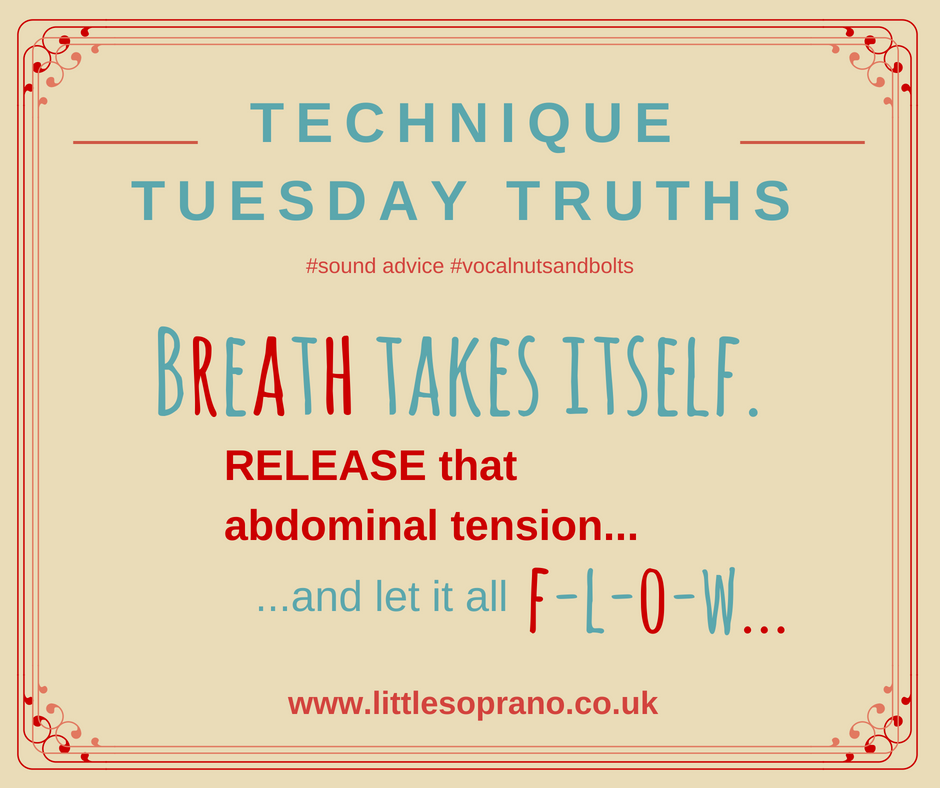Breathing & airflow for classical singers: learning the facts

Shall we explore the fundamentals of breath and airflow in greater detail?
Proper airflow is a crucial element in achieving vocal excellence. However, to fully comprehend its significance and make advancements, it must be examined alongside the other 5Essentials of vocal technique.
Singers often think they need to control their breath by taking in large amounts of air and holding on it for as long as possible to nail a 4-bar phrase, a high note, or the final note. However, the truth is more complex than one might expect.
It usually comes down to knowing and understanding my suggested 5 basic principles. But here we are focusing on just one of those five… Airflow, not airb-l-o-w.
So, how do you feel about the following statement?
Onset: is yours breathy, glottal or balanced? Breathy = airflow occurs before glottis closes. Glottal = glottis closure completes before airflow begins. Balanced = co-ordinated action of muscle & breath i.e. … synchronised.
What is the main underlying problem with faulty ‘onset’ (the moment the voice makes a sound)? What is the magic recipe for onset success?
It’s about learning and understanding the science of .. A I R F L O W. About how to maintain the flow of air over those little vocal folds and about experiencing a feeling of balance, not overwhelm.
One of my teachers, Ilse Wolf, would always talk about ‘singing on the breath’. I really didn’t have a clue what that actually meant. I would listen while she explained, while she showed me diagrams in books that had pretty much been worn out by her fingertips over the years, as she pointed out the movement of AIRFLOW in the body as we breathe in and sing OUT.
But that was more than 30 years ago - and now I so GET everything she was sharing with me. I didn’t understand then, but I’ve pursued my learning journey to the point where I am now teaching the same principles, just as she did then, to all her singing students.
Take this infographic - a favourite of mine, because it provokes thought and gives a hint of what is truly involved in the rather paradoxical ‘breathing mindset’. But, in truth? It’s the tip of the iceberg.

Very much aligned with the idea of ‘Airflow, not AirBLOW’, here I offer the suggestion that breathing has to do with ‘allowing’, and to do what comes naturally.
Relax those abdominal muscles as the air goes in, and allow the diaphragm room to lengthen and flatten out. To do that, you must release any abdominal tension, but not in any way give in to collapse.
Feel that muscle contraction as it supports the out-breath, enjoy the moment, keep the focus … and then release! Allow the air to be sucked back in, as part of the body’s natural response. In short, to ‘inspire’.
It’s a paradox, a contradictory thought. It is never as simple as filling your lungs with as much air as possible with the hope of holding on to it and making it last. NO!
Singers concern themselves with their breathing over and above other basic vocal techniques, thinking that if they could only master their breathing, everything else would fall into place. Airflow is one important ingredient of the whole vocal recipe - but to truly understand what’s going on, and therefore make progress, it has to be studied in context and seen as one part of the 5Essentials of vocal technique.
There’s always more to learn. But that’s all part of the JOY.
I encourage singers to think more about the way they use the outgoing breath - rather than fixate on how much air they can get in during the gaps in the music!
Breathing is indeed a natural reflex, and yes, we hope it does work on its own (24/7 would be good), but somehow when it comes to singing, our focus shifts (especially in the early days), and we fear ‘not having enough’ and ‘running out’.
It is about trust. It is about allowing our bodies to respond to triggers from the inside out. Great breathing technique, learned patiently over time has a few essential pointers:
- knowing and understanding postural alignment
- focusing on what happens during exhalation, feeling it
- trusting the body’s own reflex to refill the lung space
- releasing to create a new intake, a natural vacuum of air
- knowing that breath retention is bad news, not control
- accepting that it’s a complex issue, ongoing
Understand it, don’t be a slave to it. Neuroplasticity rules, ok?
Other usefully related blog posts:
- Breath takes itself
- Expiration and Postural Alignment
- Connection is a feeling, not a sound
- Free the neck & balanced alignment
- Muscle memory - friend or foe?
Links as mentioned in the YouTube video above:
- If you're seeking guidance, my mentoring group Virtually Vocalise offers a unique learning experience. Learn more about it now: Mentoring/membership:
- Joyce DiDonato: on her journey with learning breathing technique: https://www.facebook.com/ClassicFM/vi...
- Further Airflow & Breath reading: We must trust the process, despite counterintuitive thoughts and responses wanting to push their way in.
Useful Little Soprano video warm-ups and tutorials:
- Vocal Basics Knowhow YouTube playlist:
 • Vocal Basics Know...
• Vocal Basics Know... - Vocal Warm-ups for Singers (basics):
 • Vocal warm-ups fo...
• Vocal warm-ups fo...
Curious about singing basics? Let's get you started with the right learning tools.
Download my free need-to-know vocal essentials guide for singers, vocal technique principles simply explained.







